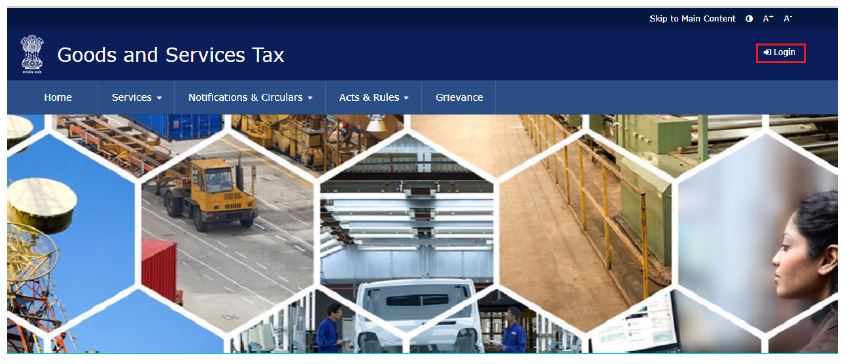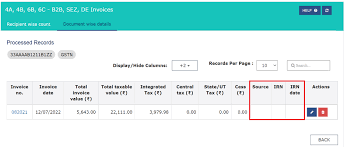The goods and services tax transformed the indirect tax system in India by replacing multiple taxes like VAT, excise duty, service tax, etc. with a single indirect tax. GST is a destination-based tax applied on every value addition, eliminating the cascading effect of taxes on consumers and bringing uniformity to the indirect tax structure in the country. As per the law, all businesses involved in the sale and purchase of goods and services in the country are required to register under GST. All the processes, like registration, filing of returns, and payment of tax, are done online through the portal provided by the government. This has simplified the compliance processes and brought small traders and business entities in the unorganized sector into the fold of the formal economy, helping in economic growth in the country.
GST return filing is an important part of compliance in this system, and it is mandatory for all taxpayers to file the periodic returns within the due dates. Non-compliance can lead to late fees, penalties, and other legal consequences. Therefore, it is important for taxpayers to understand the process of GST return filing. Here we discuss in detail the process of GST return filing.
What is a GST return?
All businesses registered under GST in India are required to declare their business transactions related to their sales and purchases in the portal, including invoice details, payments, and receipts. Based on these details, the system calculated the tax liability of the taxpayer after adjusting the input tax credit, which the taxpayer has to pay before filing the mandatory returns. Input tax credit is the tax paid by the business on its purchases used in the business. GST returns are of various types, like monthly, quarterly, and annual. The taxpayer is required to file the returns online in the portal within the specified due date in the proper form provided.
Also Read: Everything you need to know about GST
Who should file the GST returns?
All persons and business entities engaged in the supply of goods and services in the country are required to register under GST. Apart from that, certain businesses are required to compulsorily register under GST even when their aggregate turnover does not exceed the specified limit. So, the eligibility criteria for filing GST returns can be summed up as follows:
- Regular taxpayers: when the aggregate turnover of the business supplying goods exceeds 40 lakhs and the aggregate turnover of the business supplying services exceeds 20 lakhs in a financial year, then it is mandatory for them to register under GST and file GST returns as specified.
- Composition scheme taxpayers: small businesses registered under the composition scheme with an aggregate turnover of up to 1.5 crores need to file quarterly GST returns.
- Input service distributors: entities that receive input tax credit and distribute it to different branches or units of the same organization must file monthly GST returns.
- Non-resident taxpayers: non-residents conducting business in India must file GST returns for the period they conduct the business, irrespective of their turnover.
- E-commerce operators: e-commerce operators who facilitate the supply of goods or services online must file returns on behalf of the sellers registered on their platform for the supplies made through them.
- TDS deductors: certain institutions are required to deduct tax at source on payments made to suppliers. They need to file monthly returns, giving the details of TDS deducted at source.
Also Read: Requirements Of A Regular Taxpayer Under GST
Types of GST returns
Taxpayers are required to file four types of GST returns. Returns for supplies, returns for purchases, monthly or quarterly returns, and annual returns. To file the return, the taxpayer should have a valid GSTIN and login credentials to login to the portal. The various types of returns under GST are as follows:
| GSTR-1 | All normal taxpayers must file the return GSTR-1, except those registered under the composition scheme. This return comprises details of all outward supplies of goods and services made or transactions conducted during the tax period, including debit and credit notes issued, and has to be filed monthly for regular taxpayers and quarterly for those registered under the composition scheme. |
| GSTR-2A | TheGSTR -2A return is auto-populated. It consists of details of all inward supplies of goods and services received from registered suppliers during a tax period, based on the details filed by them in GSTR-1. It is a read-only return. |
| GSTR-2B: This is an auto-generated return that is also the input tax credit statement for taxpayers. It is generated on the 14th of the following month and helps in reconciliation and simplifies compliance for the taxpayer. | |
| GSTR-3B | GSTR-3B is a monthly self-declaration summary statement containing details of all outward supplies made, input tax credit claimed, and taxes paid. All normal taxpayers are required to file this every month. |
| GSTR-4 | GSTR-4 returns have to be filed by taxpayers registered under the composition scheme. It has to be filed annually. The taxpayers must pay taxes through the form CMP-08, every quarter on the 18th of the month following a quarter. Gstr-4 includes invoice-wise, state-wise inward supplies and consolidated details of outward supplies made. |
| GSTR-5 | GSTR-5 returns must be filed by non-resident taxpayers conducting business transactions in India. It contains details of all outward supplies made, inward supplies received, credit and debit notes, tax liability, and tax paid. It has to be filed monthly. |
| GSTR-6 | GSTR-6 is a monthly return that must be filed by input service distributors (ISDs). It shows the details of input tax credits received and distributed by the ISDs. It has to be filed every month. |
| GSTR-7 | GSTR-7 is a return that must be filed by TDS deductors under GST. It consists of details of the TDS deducted, the TDS liability payable and paid, and the TDS refund claimed, if any. The return has to be filed every month. |
| GSTR-8 | GSTR-8 is a monthly return that must be filed by e-commerce operators registered under GST (TCS deductors). It consists of details of all supplies made and TCS received through the e-commerce operators. It has to be filed monthly. |
| GSTR-9 |
GSTR-9 is the annual return that must be filed by all regular taxpayers registered under GST. It comprises details of outward supplies made, inward supplies received, input tax or refund claimed, etc. It is a mandatory return, and the taxpayer must have filed the other applicable returns, like GSTR-1, GSTR-3B, etc., of the relevant financial year. It is not required to be filed by composition taxpayers, casual taxable persons, input service distributors, non-resident taxable persons, or persons paying TDS under Section 51 of the CGST Act. |
| GSTR-9A | GSTR-9A is an annual return that must be filed by taxpayers registered under the composition scheme. It includes all the details that the composition dealers have provided in their quarterly returns during the financial year. |
| GSTR-9C | GSTR-9C is a reconciliation statement that all taxpayers registered under GST with a turnover exceeding 2 crores in a financial year must file. It has to be filed annually. |
| GSTR-10 | Gstr-10 is the final return that taxpayers who have cancelled or surrendered their GST registration need to file. It has to be filed within a quarter of the date of the cancellation of registration. |
| GSTR-11 | GSTR-11 has to be filed by persons who are designated a unique identification number (UIN) to claim a refund under GST for the goods and services they purchased in India. Uin is allotted to foreign diplomatic embassies that are not liable to pay tax in India. The return includes details of internal supplies received and refunds claimed. |
Payment of GST
Taxpayers must remit the net GST due on the 20th of the month following the reporting month, along with the submission of return GSTR-3b.
Penalty for not filing GST returns
A late fee of Rs. 50 per day for each day, both under CGST and SGST law, is applicable for late filing of GST returns. So, a total of Rs. 100 per day is applicable for late filing of GST returns, subject to a maximum of Rs. 5,000 per day. In addition to the late fee, the taxpayers are liable to pay interest at 18% per annum for the number of days from the day after the filing deadline to the day on which the payment is made.
The GST authorities can suspend the GST registration of taxpayers who fail to file returns for three consecutive months. They may cancel the registration if the taxpayer fails to file the GST returns for six consecutive months.
Also Read: Protect Your Small Business with the Basics of GST
Steps to file GST returns
All taxpayers have to file GST returns online through the GST portal, which is user-friendly and easy to use. It involves the following steps:
Step 1: The taxpayer has to navigate to the GST portal at www.gst.gov.in.

Step 2: The taxpayer has to login with valid credentials.
Step 3: The taxpayer has to upload the invoices and note the invoice reference number issued against each invoice.
Step 4: After all the invoices are uploaded, the inward returns, outward returns, and cumulative monthly GST returns are uploaded. The taxpayer has to verify all the data and file the applicable returns.

Conclusion
GST is a comprehensive indirect tax system in India that has brought transparency and simplified compliance for taxpayers. Apart from eliminating the burden due to the cascading effect of taxes on the consumer, it has provided a host of benefits for businesses, leading to unprecedented growth in the economy of the country. As the processes are all online, it is easier for the authorities to monitor and audit the transactions of the taxpayers and thereby check tax evasion. The taxpayers are required to submit the GST returns on time to avoid late fees, interest, and other penalties. An offline tool has also been provided by GSTN to help remote taxpayers. Understanding the process of filing GST returns is crucial for taxpayers, as it is an important part of compliance.